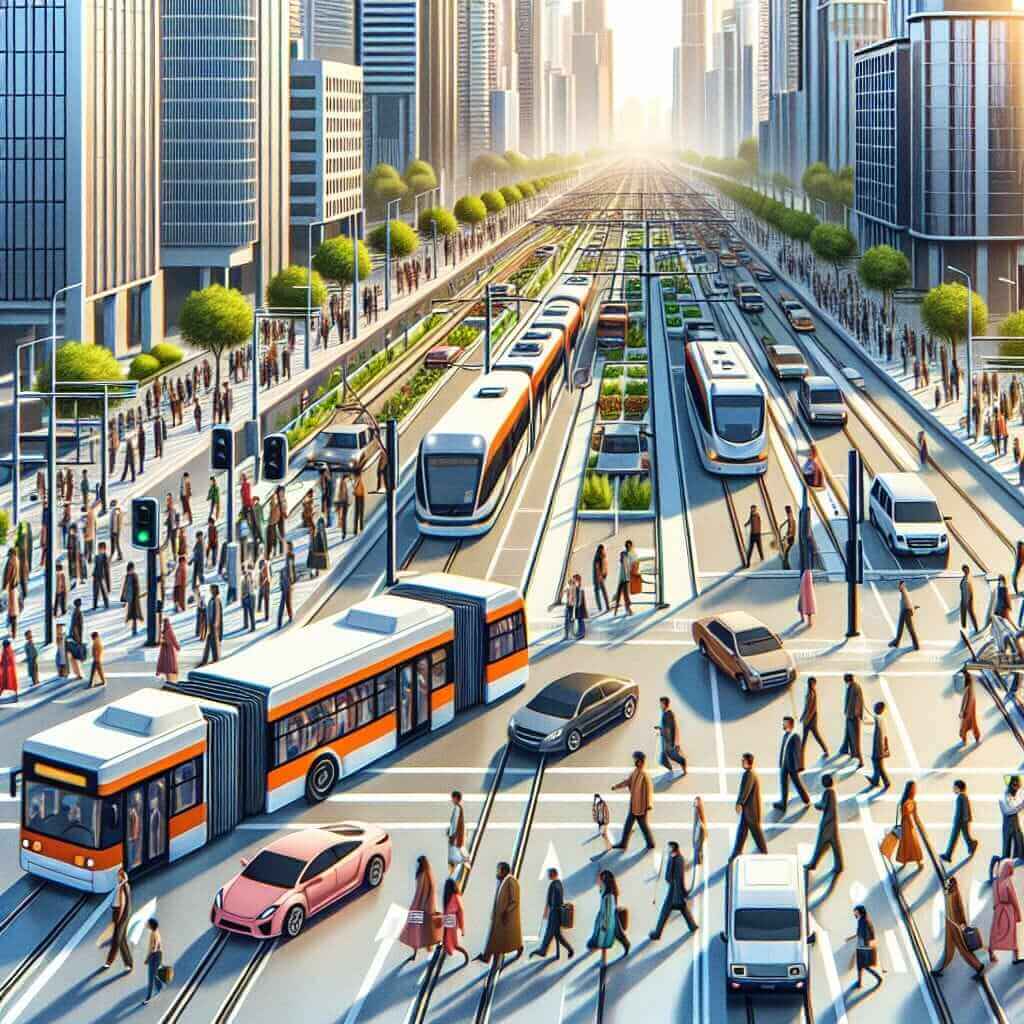Transportation and pollution are critical issues often addressed in IELTS Writing Task 2. This topic frequently appears in past exam questions and is likely to continue being relevant in future exams due to its socio-economic and environmental significance. Below are some related essay prompts from recent IELTS exams:
- “Some people believe that the best way to reduce road traffic and pollution is to increase the cost of fuel. To what extent do you agree or disagree?”
- “In various countries, more and more people are choosing to cycle instead of driving. What are the reasons for this trend, and how can it impact pollution levels?”
- “Public transportation is essential for decreasing pollution and traffic congestion. Discuss both views and provide your opinion.”
In this article, we’ll select one essay prompt, analyze it in detail, and provide a comprehensive model answer suitable for IELTS Band 7 or 8. Additionally, we will highlight crucial vocabulary and grammar structures needed for this topic.
Analyzing the Essay Prompt
Selected Essay Prompt:
Some people believe that the best way to reduce road traffic and pollution is to increase the cost of fuel. To what extent do you agree or disagree?
This essay prompt requires you to discuss the effectiveness of increasing fuel prices as a method to reduce traffic and pollution. You need to clearly state your stance and support it with relevant reasons and examples. This type of essay is an “Agree or Disagree” task, where you need to argue either in favor or against the proposed solution.
Model Essay
Title: Increasing Fuel Costs: A Solution to Reduce Road Traffic and Pollution?
In recent years, there has been growing concern about the rise in road traffic and pollution levels. Some individuals argue that increasing the cost of fuel is the most effective measure to combat these issues. While this approach might have some merits, I believe that it is not the best solution to address the underlying problems.
Firstly, raising fuel prices can potentially decrease the number of vehicles on the road as it becomes more expensive for people to drive. This reduction in traffic could lead to lower pollution levels as fewer cars emit carbon dioxide and other harmful gases. For example, countries like Denmark and the Netherlands have seen a decline in car usage after implementing higher fuel taxes, which has consequently reduced air pollution.
However, such a measure disproportionately affects lower-income individuals who rely on their vehicles for daily commuting. These people might struggle to afford the increased fuel prices, causing financial strain. Moreover, this solution does not address the root cause of pollution, which is the over-reliance on fossil fuels. Instead of merely increasing fuel costs, investments should be made in promoting public transportation and greener alternatives, such as electric vehicles and cycling infrastructure.

Furthermore, incentivizing the use of public transport can effectively mitigate traffic congestion and pollution. Efficient and affordable public transport systems can encourage people to switch from private cars to buses, trains, and trams. For instance, cities like Tokyo and Singapore have successfully implemented comprehensive public transport networks, resulting in reduced traffic and improved air quality.
In conclusion, while raising fuel prices may offer temporary relief from traffic and pollution, it is not a holistic solution. A more sustainable approach involves investing in public transportation, promoting alternative energy sources, and supporting infrastructure for walking and cycling. These measures can ensure long-term environmental benefits and a more inclusive society.
Word count: 288
Key Points When Writing on This Topic
- Contextual Introduction: Always begin by providing some background on the issue. Mentioning the rise in traffic and pollution sets the stage for your argument.
- Clear Stance: Make sure to explicitly state whether you agree or disagree with the given statement.
- Balanced Argument: Provide arguments both for and against the proposed solution, but clearly lean towards your own stance.
- Examples and Evidence: Use real-world examples to support your arguments. This helps in making your essay more credible.
Important Vocabulary
- Emit (v.) /ɪˈmɪt/: To release or discharge (e.g., vehicles emit carbon dioxide).
- Incentivize (v.) /ɪnˈsɛntəˌvaɪz/: Provide incentives or encouragement (e.g., Incentivizing the use of public transport).
- Congestion (n.) /kənˈdʒɛs.tʃən/: Overcrowding, especially of traffic (e.g., traffic congestion is a major problem).
- Infrastructure (n.) /ˈɪn.frəˌstrʌk.tʃər/: The basic frameworks or facilities (e.g., public transport infrastructure).
- Sustainable (adj.) /səˈsteɪ.nə.bəl/: Capable of being maintained over the long term without harming the environment (e.g., sustainable solutions).
Conclusion
Understanding how transportation impacts pollution is critical for developing effective solutions to environmental problems. By focusing on holistic approaches such as improving public transportation and promoting alternative energy sources, we can reduce our reliance on fossil fuels and minimize pollution. Future essay questions may continue to explore this topic, so practice with prompts like “To what extent can promoting cycling help reduce urban pollution?” or “Is investing in public transportation the best way to solve traffic issues?” to better prepare for the IELTS exam.
For more resources, you can explore The Role of Public Transportation in Reducing Urban Pollution and The Impact of Telecommuting on Transportation Infrastructure.